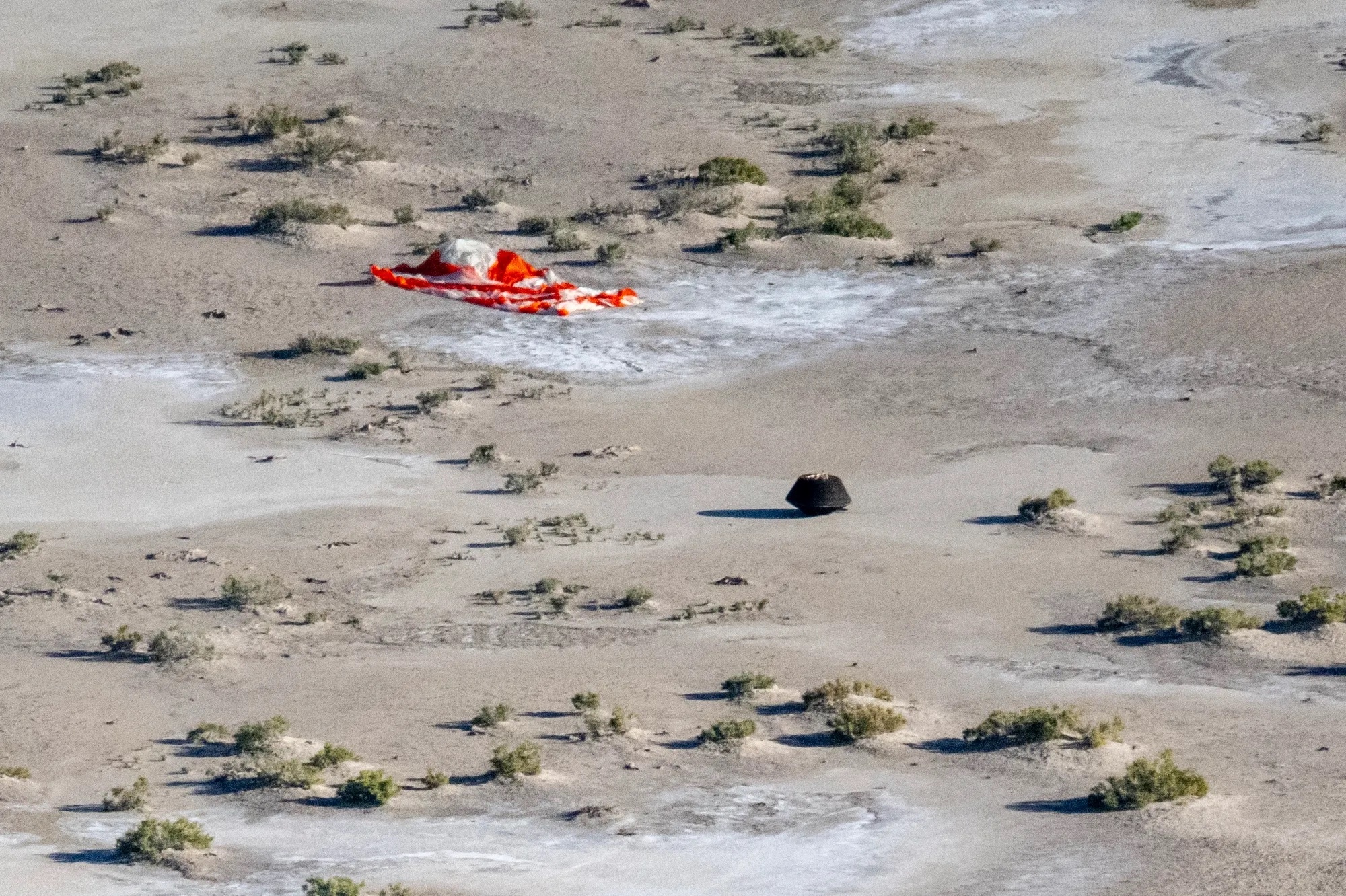6.12.2023

The OSIRIS-REx capsule return capsule and its main parachute after landing in the Utah desert Sept. 24. Credit: NASA/Keegan Barber
WASHINGTON — The drogue parachute on the OSIRIS-REx sample return capsule failed to deploy properly because of a design error, a flaw that did not prevent a safe landing of the capsule.
In a Dec. 5 statement, NASA said a review of data from the capsule’s Sept. 24 landing in the Utah desert and documentation about the vehicle led the agency to conclude that “inconsistent wiring label definitions” prevented the drogue from deploying as intended during the capsule’s descent.
The drogue was designed to deploy at an altitude of about 30.5 kilometers, helping to slow and stabilize the capsule before the larger main parachute was deployed. A signal intended to deploy the drogue, though, instead caused the capsule’s systems to cut the drogue free while it was still packed inside.
The capsule continued to fall without the drogue until it descended below 3,000 meters, when NASA said the drogue then deployed. Since its retention cord was already cut, the drogue escaped.
The main parachute then deployed, NASA stated, and “its design was robust enough to stabilize and slow the capsule, resulting in a safe landing more than a minute earlier than expected.”
It was clear the day of the landing that the descent had not gone according to plan. Officials said then that they did not have any visual confirmation of the drogue inflating and thus it was not clear how well it had performed.
“Something in our sequence may or may not have behaved itself exactly the way we expected it to, but the subsequent things in the sequence made up for it,” said Tim Priser, chief engineer for deep space exploration at spacecraft manufacturer Lockheed Martin, at a press conference shortly after the landing. “At the end of the day, when that main chute deployed, it basically corrected anything that may have happened ahead of it.”
NASA said in the statement that the problem was linked to an inconsistent definition of the term “main” in documentation of the system. “On the signal side, ‘main’ meant the main parachute. In contrast, on the receiver side ‘main’ was used as a reference to a pyrotechnic that fires to release the parachute canister cover and deploy the drogue,” the agency explained. Connecting the two mains caused the deployment to happen out of order.
OSIRIS-REx, though, escaped damage, unlike a similar incident nearly two decades earlier. In September 2004, NASA’s Genesis mission returned to Earth after collecting samples of the solar wind. The drogue on its return capsule failed to deploy, causing the capsule to tumble and crash in the Utah desert. A NASA review concluded that “G-switch sensors” intended to measure the capsule’s deceleration and trigger parachute deployment were installed upside down, a flaw not detected in pre-launch reviews.
The OSIRIS-REx capsule did not tumble and ultimately landed safely, protecting its payload of an estimated 250 grams of material collected from the asteroid Bennu. The sample canister is now in a NASA astromaterials facility at the Johnson Space Center, where a team has already extracted more than 70 grams of material, some of which has been handed over to scientists for analysis.
“I think over the next year, you’re going to see some astounding findings from that study of the sample,” Rich Burns, project manager for OSIRIS-REx at NASA’s Goddard Space Flight Center, said during a panel discussion at the SpaceNews Icon Awards event Dec. 5, where the mission won Civil Space Achievement of Year.
The one problem that effort has faced has been getting the main sample container open. A couple fasteners have been “a little stubborn about coming loose,” he said. That effort is complicated by the need to avoid contaminating the pristine sample.
Burns said that the project is developing new tools “that are fabricated to be consistent with not contaminating the sample” to remove the stuck fasteners. He noted, though, that the more than 70 grams of material that has been extracted so far exceeds the mission requirement of collecting 60 grams.
Quelle: SN
